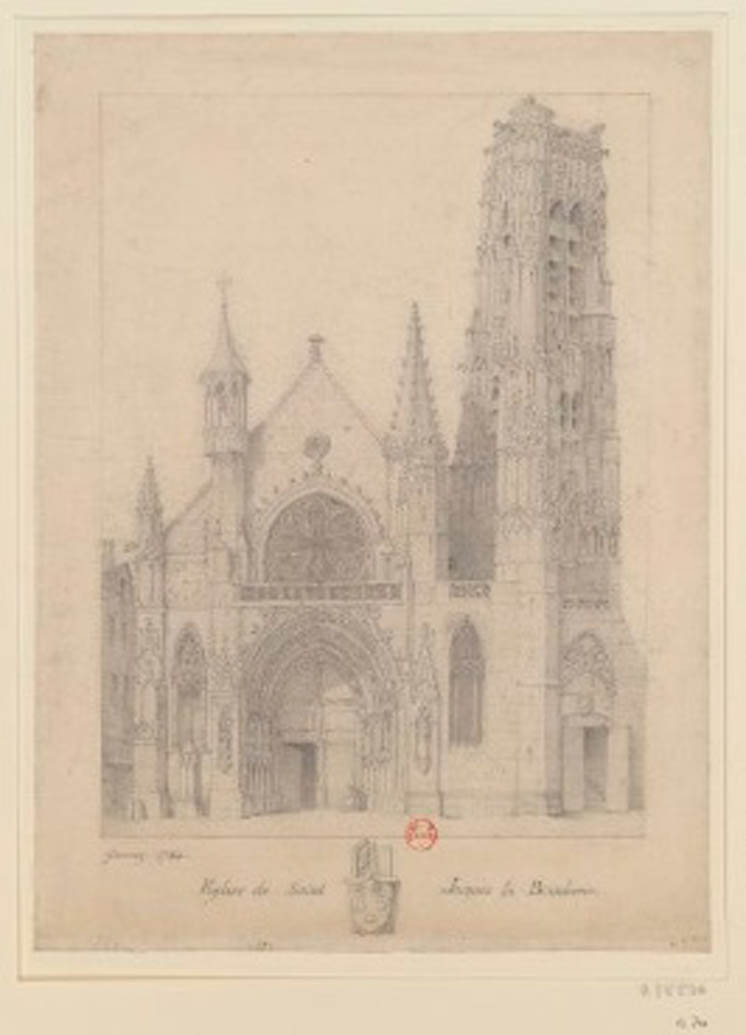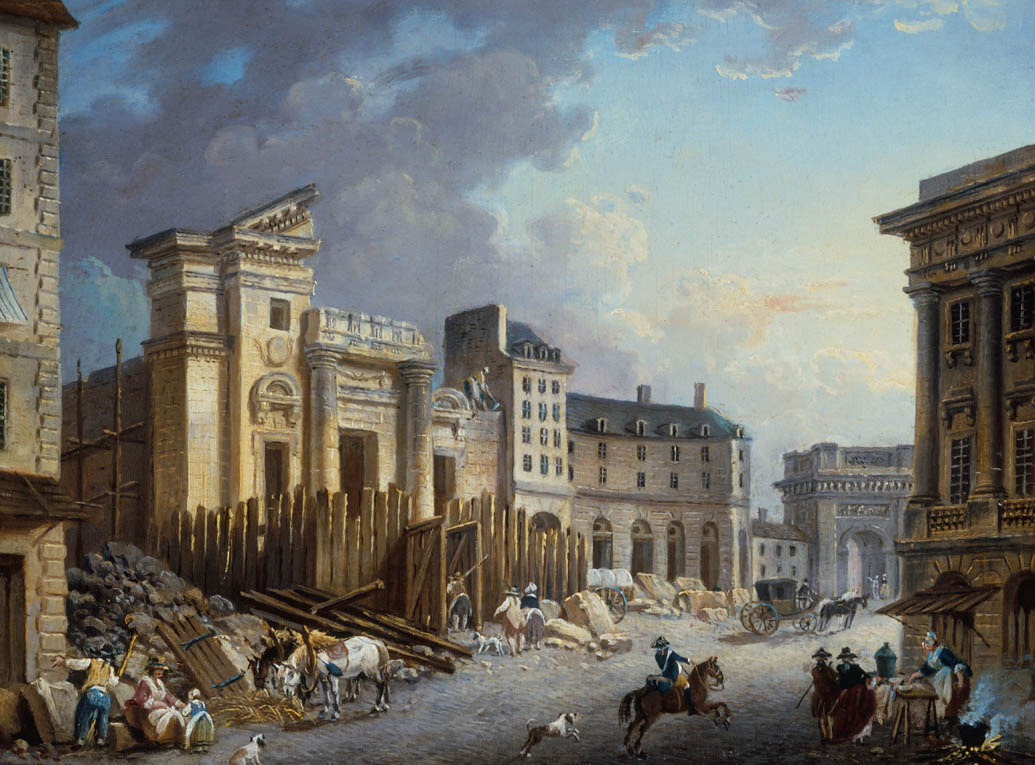Sharing the Church’s Riches
The current Saint-Jacques tower is the only vestige of the Saint-Jacques-la-Boucherie church. Like other religious buildings, the church became national property in 1790: if the people were poor and the State’s coffers were empty, the Catholic Church was very rich. For revolutionaries, this represented a type of confiscation from the people: they thus decided to nationalize the clergy’s property. When mass was not being celebrated in the Saint-Jacques church, inhabitants from the Lombards section (a kind of district) held their general assembly here. However, with the war, the State needed money. The church was rented to an industrialist and then sold to a building contractor. The new owner used it as a quarry for his construction sites, but saved the tower. This was not due to an excess of piety; the tower was converted into a lead bullet factory. Melted at the top, the molten metal flowed into a basin on the ground floor. On the site of the former church, a second-hand clothes market was inaugurated in 1824.
Location
ItineraryThe Tour Saint-Jacques park, on the corner of the rue Rivoli and rue Saint-Martin
Suggestion
The Hôtel de Ville and its neighborhood
The Grand Châtelet, Prison of the Ancien Régime
To find out more…
The Revolution: a war against religion?
Like in the Saint-Jacques church, during the Revolution people continued to celebrate the Catholic faith in Parisian churches. However, some of them also became sites for political assemblies, granaries as well as cotton or saltpeter factories, necessary for making gunpowder. The objective was not to attack religion, but to find a civic utility for these buildings, which since the nationalization of the clergy’s assets (November 2, 1789), were now the nation’s property and sometimes resold to individuals. In this image, the painter Antoine Demachy depicted the demolition of the Saint-Barthélemy church on the Ile-de-la-Cité in 1791, a church that was never completed, and therefore considered to be useless.






